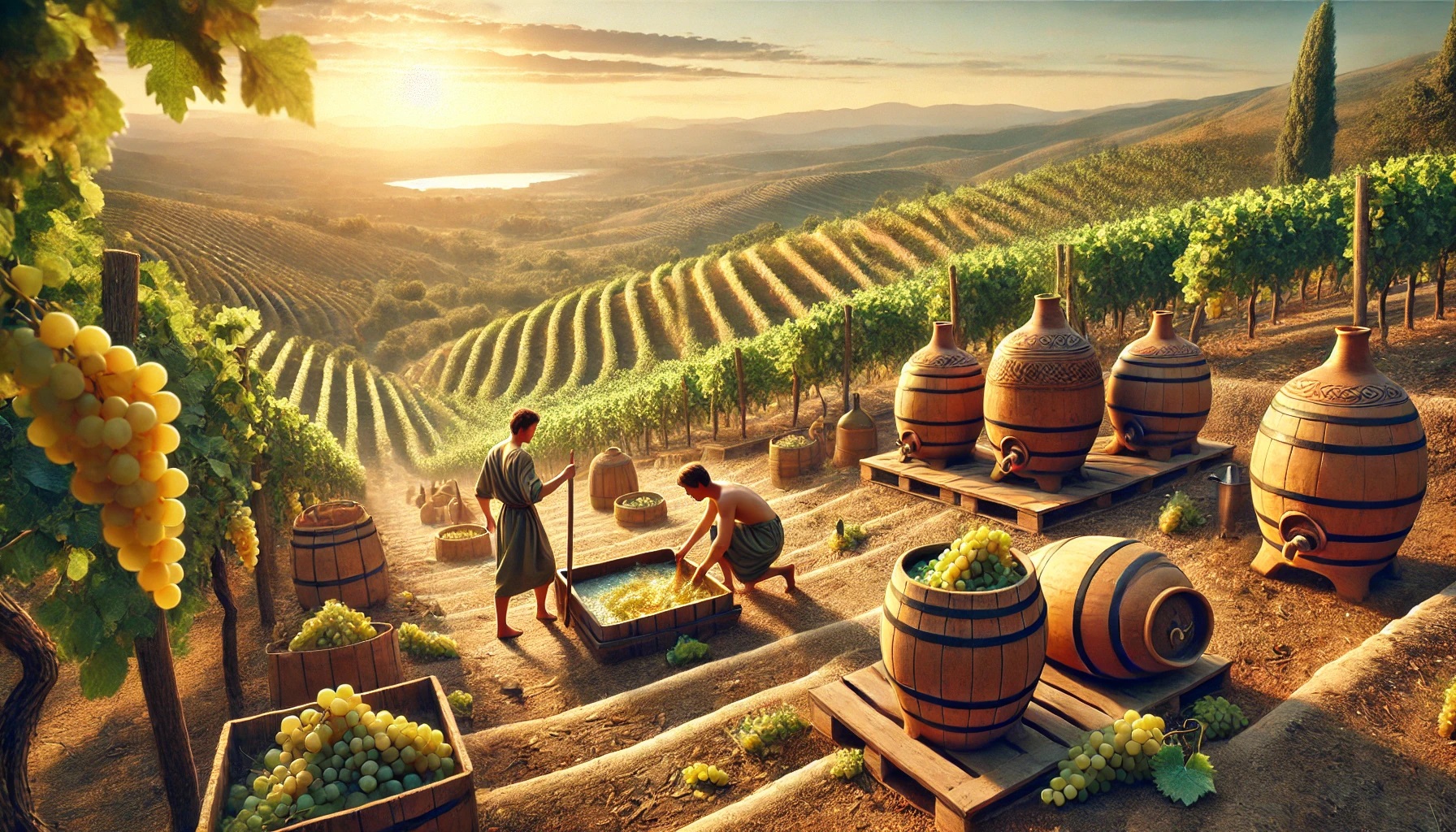
Wine is older than civilization itself. Before humans figured out how to build houses or make fire (okay, maybe not fire), they had already mastered the art of fermenting grape juice into something that made them feel warm and fuzzy. That’s right, our ancestors figured out the fun stuff first! But here’s the twist: many of the winemaking methods from thousands of years ago are still around today, albeit with a few modern tweaks. So, let’s journey through time, from ancient clay pots to biodynamic magic, and see how these age-old traditions are now reimagined in the modern wine world. Spoiler: You won’t need a time machine, just a corkscrew.
Amphoras: Wine’s Ancient Clay Jars
Long before glass bottles, corks, and fancy labels, winemakers in ancient Greece and Rome used something that looks more like a garden urn than a wine vessel: amphoras. Picture a big clay pot with two handles and, usually, no spout (because why make pouring easy?). Amphoras were the OG wine storage solution, used for both fermentation and aging. These vessels kept oxygen out, preserving the wine, and adding a certain earthy quality that we still romanticize today.
Fast forward a few thousand years, and amphoras are making a comeback. Some winemakers, especially those into natural and organic wine, are bringing back these ancient vessels. They believe that clay amphoras provide a more “authentic” flavor, allowing the wine to interact with the earth (literally). It’s all about going back to basics—minus the ancient Roman togas.
The Wild Yeast Party
In ancient wine making traditions, winemakers didn’t have those tidy little packets of commercial yeast that modern winemakers rely on. Instead, they let wild yeast (basically whatever was floating around in the air) ferment their wine. Now, this wasn’t just some lazy shortcut; it’s actually a pretty risky endeavor. Wild yeast can be unpredictable. Sometimes it creates magic, and other times…well, let’s just say it’s a good thing ancient winemakers didn’t have Yelp.
But here’s the thing: wild yeast ferments are experiencing a major revival today. Many modern natural winemakers are ditching commercial yeasts and letting the wild ones take control. This method can give wines more complex, unpredictable flavors—kind of like opening a present when you don’t know if it’s socks or an exotic pet.
Amphora’s Hipster Cousin: The Qvevri
Okay, let’s leave Greece and Rome for a second and head over to Georgia. No, not the U.S. state famous for peaches, but the ancient winemaking region in the Caucasus where qvevri—a large, egg-shaped clay pot—is the star of the show. These giant pots, often buried underground, have been used for over 8,000 years to make wine. Yeah, you read that right—8,000 years. And we thought we were so advanced with our wine cellars!
The qvevri is like the hipster cousin of the amphora. It’s quirky, it’s niche, and it’s been underground (literally) for a while. Today, some winemakers are digging up the past—pun fully intended—by using qvevri to make wine. The process involves fermenting and aging the wine in these massive, buried vessels, giving the wine earthy, mineral notes.
Treading Grapes: Not Just for Stomping Fun
When we think of ancient winemaking, it’s hard not to picture barefoot villagers stomping grapes in giant vats, giggling like they’re at a grape-squishing party. In fact, grape treading was a serious winemaking method that dates back to the earliest vineyards. Foot stomping allowed gentle pressure to extract the juice without crushing the seeds, which could make the wine bitter.
Believe it or not, some winemakers today still use the ancient technique of foot stomping. And yes, it’s exactly as fun as it sounds. It’s all about keeping things low-tech, and it’s often associated with more artisanal, small-batch wines. So, the next time you sip a wine that tastes a bit more “hands-on,” there’s a chance it was foot-treaded by a dedicated winemaker (who probably had a blast doing it).
To explore wines that celebrate hands-on methods, check out our How to Choose the Perfect Wine for Any Occasion, where we break down wines for every kind of party—even a grape-treading one.
Terraced Vineyards: Wine with a View
If you’ve ever seen pictures of ancient terraced vineyards, they’re truly a sight to behold. These were essentially stairways carved into hillsides to grow vines on steep slopes. The technique allowed ancient winemakers to maximize their vineyard space and ensure that each vine got plenty of sun.
This ancient practice continues today, particularly in regions like Italy’s Cinque Terre and Portugal’s Douro Valley. Modern winemakers, like their ancient predecessors, plant vines on terraced slopes to get the best grapes from tough terrain. Plus, it makes for some pretty Instagram-worthy vineyard views.
Interested in learning more about vineyard real estate? Our article on investing in vineyard real estate has all the details on how to sip wine while owning your own slice of history.
The Legacy Lives On
It’s clear that ancient winemaking traditions aren’t just relics of the past. They’ve been reimagined, revived, and sometimes even romanticized in modern winemaking. While we may no longer stomp grapes in togas (though who’s stopping you?), the heart and soul of these ancient methods live on in today’s wine culture. Whether it’s using wild yeast, fermenting in clay pots, or growing grapes on terraced vineyards, today’s winemakers are finding that sometimes the old ways really are the best ways—especially when there’s wine involved.
Sources: